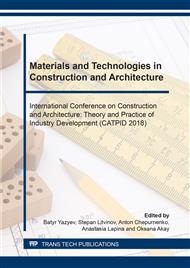p.1214
p.1220
p.1227
p.1233
p.1238
p.1245
p.1249
p.1255
p.1261
Structurally-Parametrical Optimization Technological Process by Dijkstra's Method in System Mathcad
Abstract:
The article describes the procedure of structurally-parametrical optimization of technological process by Dijkstra's method with using of Dijkstra’s functional (recurrent) equation and Mathcad system. The technological process includes n of operations and each operation can be executed by various types of equipment. Expenses (cost, time, ...) on execution of i operation by k equipment after execution by j equipment (i-1) operation are known - c (i, j, k). The algorithm of the decision of a problem by Dijkstra’s method includes two phases. The first phase is calculations of the minimum expenses for execution of all partial technological processes, from first operation of process to the last. The second phase is definition of the required optimum set of equipment which is carrying out all technological process with the minimum expenses from last operation of process to the first. The proposed procedure of structurally-parametrical optimization of technological process using Dijkstra’s method and Mathcad software significantly decreases time and labour costs on execution of such calculations and efficiently to execute investigations related with change of equipment parameters.
Info:
Periodical:
Pages:
1238-1244
Citation:
Online since:
September 2018
Authors:
Price:
Сopyright:
© 2018 Trans Tech Publications Ltd. All Rights Reserved
Share:
Citation:


